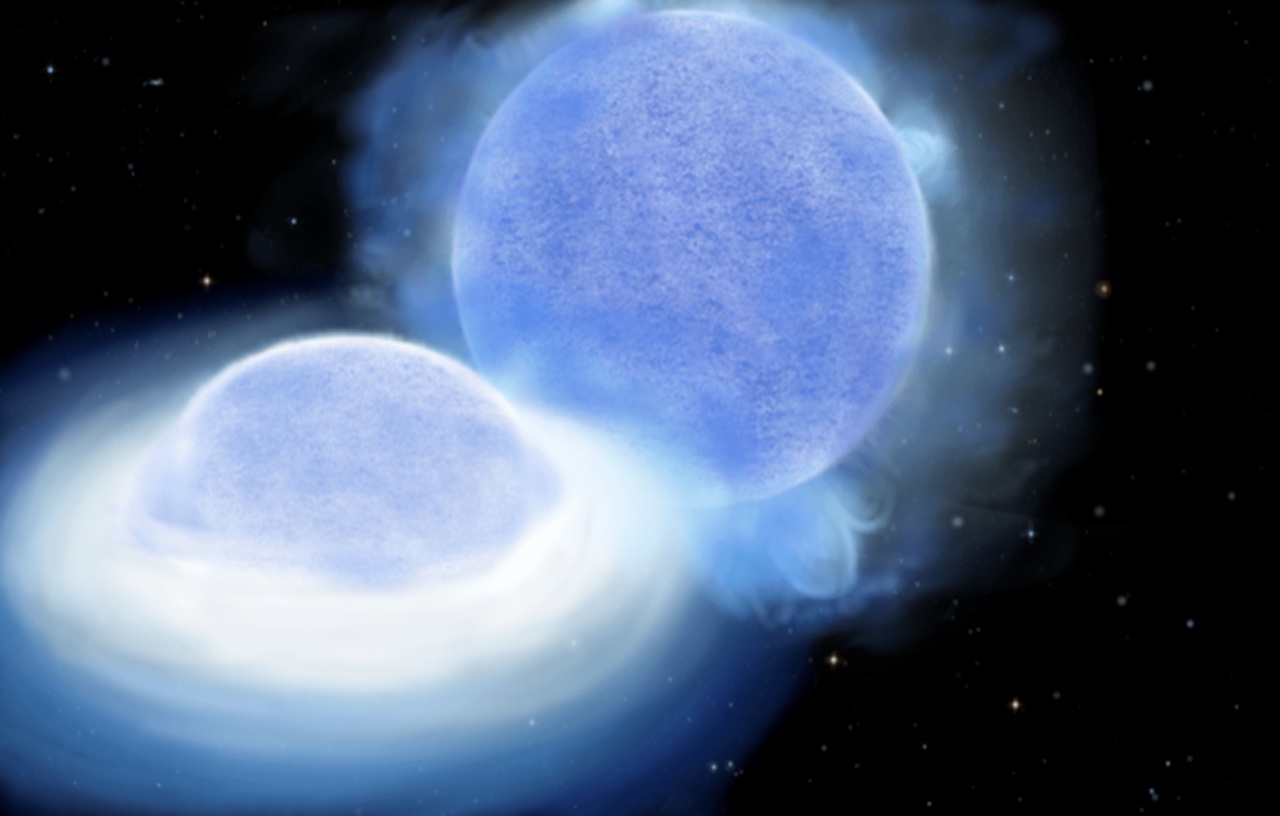The discovery or an ultra-tiny white dwarf could reveal how stars smaller than Jupiter are born.

An illustration of the TMTS J0526 binary star system. (Image credit: Jingchuan Yu, Beijing Planetarium
Astronomers have discovered an extraordinary binary system in which a “dead star,” or white dwarf, whips around its blisteringly hot and tiny stellar companion so fast that it squeezes almost 72 years into just one Earth day.
The system, designated TMTS J0526, was spotted by a Tsinghua University team using the Tsinghua University-Ma Huateng Telescope for Survey (TMTS) and is located around 2,760 light-years from Earth.

TMTS J0526 contains a carbon- and oxygen-rich white dwarf star with a mass around 74% that of the sun’s. It whips around a hot subdwarf star with a mass around a third of our star’s, and is just around 7 times as wide as Earth, making it smaller than the gas giant planet Jupiter — and one of the smallest stars ever seen in terms of volume.
The components of TMTS J0526 complete one orbit roughly every 20.5 minutes. This makes it a record-breaker for this type of binary, though the system is still a slouch compared to HM Cancri, which contains two white dwarfs that complete one orbit about every 5.4 minutes.

With its thin hydrogen atmosphere, however, the tiny star is still larger and more visible than its white dwarf companion. Yet, the white dwarf is capable of deforming the tiny star into an ellipsoid shape via its major gravitational influence as the two rapidly orbit each other.
Moreover, the discovery of TMTS J0526 isn’t just significant because of its incredibly short orbital period, but also because it could help explain how such tiny subdwarf stars are born to begin with.
Mini-stellar marvels

White dwarfs are born when stars around the size of the sun exhaust hydrogen supplies found in their cores and can no longer support themselves against the inward pressure of their own gravity.
This results in the stellar cores collapsing as the outer layers of the stars, where nuclear fusion is still proceeding, spread outwards. The process first transforms the stars into red giants, then the bodies cool off to leave behind white dwarfs surrounded by envelopes of gas and dust.
The resulting white dwarf is protected against further collapse by a quantum effect called degeneracy pressure, which prevents electrons from squeezing together. With enough mass, the degeneracy pressure of electrons can be overcome to birth neutron stars, protected by “neutron degeneracy pressure,” which too can be overcome with enough mass to birth a black hole. For this reason, white dwarfs and neutron stars are often referred to as “degenerate stars.”

After the sun has become a white dwarf in around 5 billion years, thereby destroying the inner planets including Earth, it will have a lonely existence — but not all white dwarfs are so isolated. Some exist in binary systems with another star.
Stars in these binary configurations often share a “common envelope” of surrounding gas. A theory called “Binary Population Synthesis” suggests that, when a thermonuclear explosion called a helium flash is triggered in a degenerate star during this common envelope phase, the common envelope is violently ejected, turning the stellar companion of the white dwarf into a subdwarf star with a mass around 45% that of the sun.
The ejection of a second common envelope around the two stars can then be triggered by the ignition of the non-degenerate, helium-rich core within a stellar companion. This second common envelope ejection could create an even less massive subdwarf star with a mass around 32% to 36% that of the sun.

Following the ejection of the common envelopes, the resulting hot subdwarf and leftover white dwarf orbit each other, emitting gravitational waves. Gravitational waves are ripples in the very fabric of spacetime, first predicted by Albert Einstein in 1915.
These gravitational waves carry away angular momentum, and this causes the white dwarf and the tiny hot subdwarf star to move closer together, spiraling around each other faster and faster and emitting gravitational waves more intensely in the process.
This results in the creation of a compact hot subdwarf and white dwarf binary with orbital periods of around 20 minutes.
The extraordinarily short orbital period binary system of TMTS J0526 represents the first observational evidence for the formation of a tiny hot subdwarf via the ejection of a secondary common envelope.